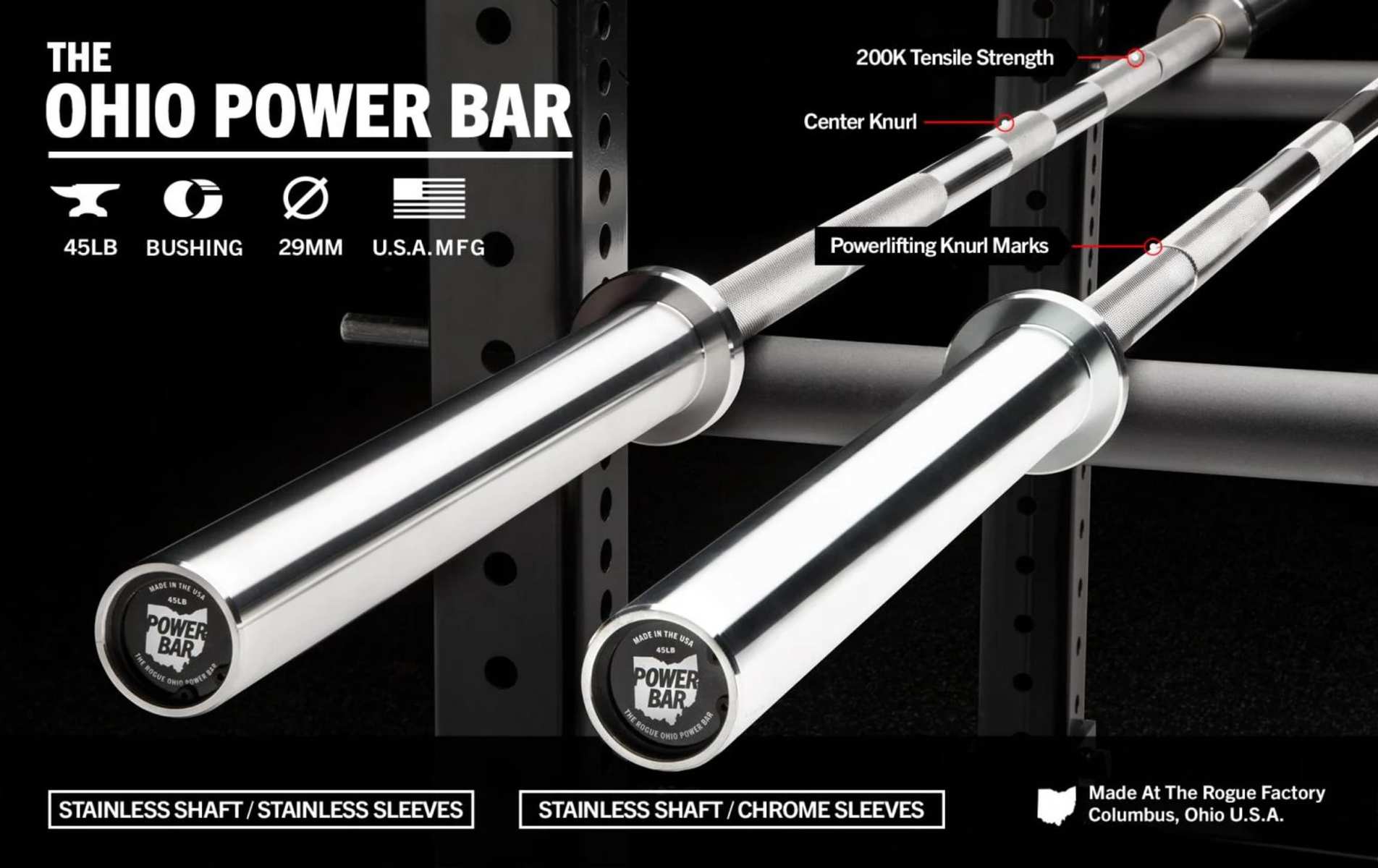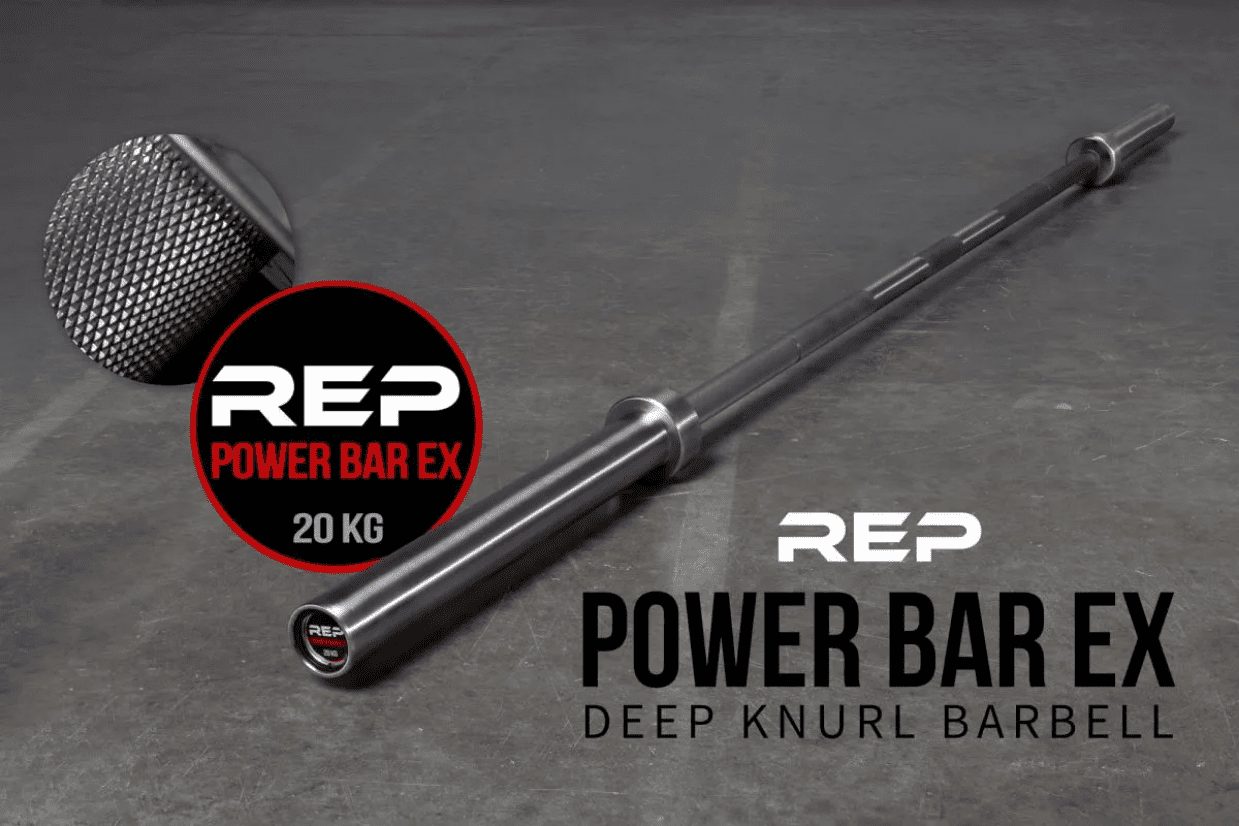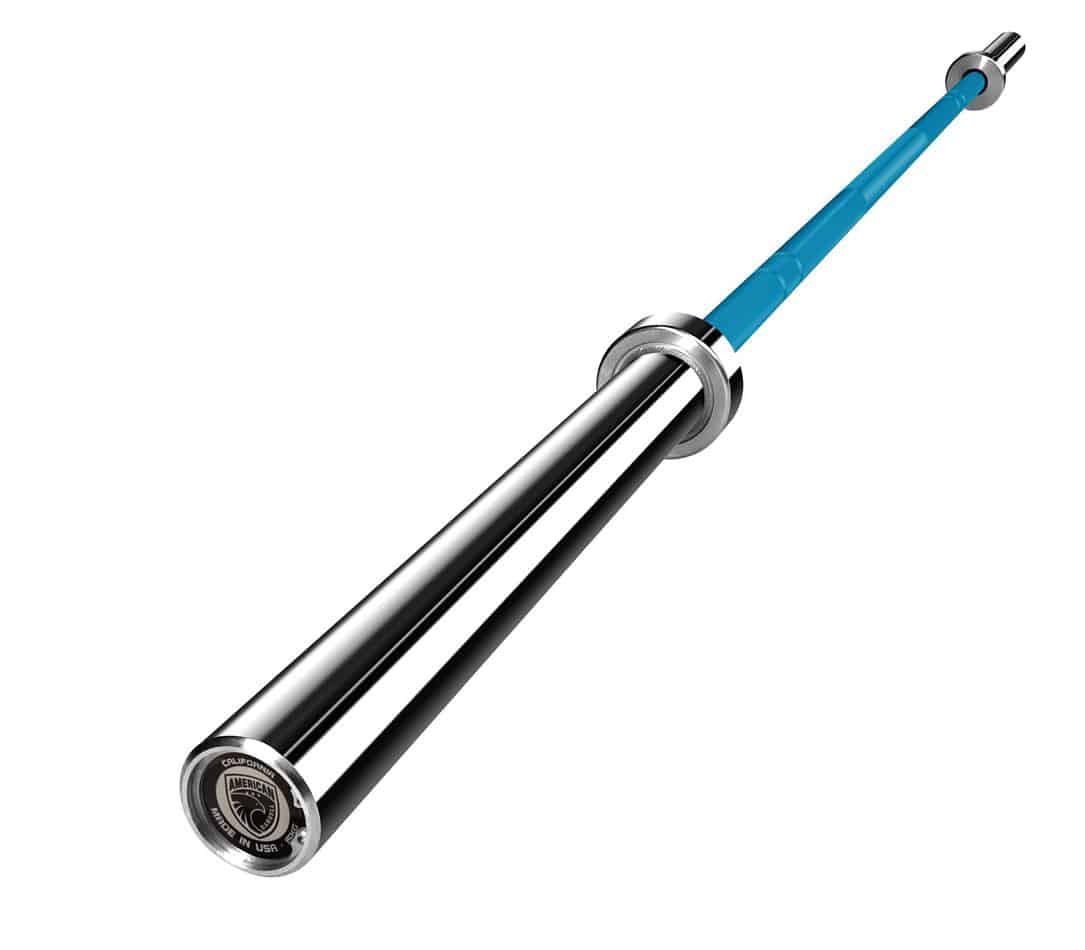When it comes to lifting weights, the barbell is one of the most versatile and effective pieces of equipment.
It allows you to perform a variety of exercises that target different muscle groups, and it’s a staple in any home gym, or home workout setup.
However, different types of knurling patterns can have a significant impact on your grip, comfort, and performance.
In this guide, we’ll explore the various types of barbell knurling and help you determine which type of grip is best suited for you.
On This Page
- What is Barbell Knurling?
- Why Does Barbell Knurling Matter?
- Types Of Barbell Knurling
- How to Choose the Right Knurling Pattern
- Our Top Barbell Knurling Recommendations
- The History Of Barbell Knurling
- How To Maintain And Care For Your Barbell Knurling
- Use Of Barbell Knurl In Powerlifting And Weightlifting
- Conclusion
What is Barbell Knurling?
Knurling is the rough, textured pattern on the surface of the barbell that provides grip and prevents slipping during exercises.
It’s created by a series of small, diamond-shaped points that are cut into the metal. Knurl can vary in intensity, with some bars having a more aggressive pattern of knurl marks than others.
The type of knurling on a bar can affect the way it feels in your hands and how secure your grip is during lifts.
RELATED – I Found The Best Barbells In 2025
Why Does Barbell Knurling Matter?
Knurling can vary in depth, spacing, and pattern, and can greatly affect how well a lifter can grip and control the bar during exercises like squats, deadlifts, and presses.
There are a few key reasons why barbell knurling matters:
Safety – The knurl on a barbell can help prevent slippage during exercises, which can be especially important when lifting heavy weights. A good grip on the bar can help prevent injury by allowing the lifter to maintain control throughout the lift.
Performance – The right knurling pattern can help a lifter maintain proper form and technique throughout a lift. The grip provided by the knurl can help the lifter generate more force and power, allowing them to lift more weight or perform more reps.
- Comfort – The texture and pattern of the knurling can affect how comfortable the bar feels in the hands. Barbell knurling that is too aggressive or not aggressive enough can be uncomfortable and make it harder to perform lifts effectively.
In summary, barbell knurling is an important factor to consider when choosing a bar for weightlifting.
A well-designed knurl can improve grip, enhance performance, and increase comfort, all of which can lead to better
Types Of Barbell Knurling
There are several different types of knurling patterns that you’ll come across when shopping for a barbell.
Center Knurl
This refers to a strip of knurling in the center of the bar, typically used for squats where the bar rests on your back.
During squats, the center knurl helps to prevent the bar from slipping down the back, especially when the lifter is performing a low bar squat.
This is because the center knurling provides additional friction against the skin, helping to keep the barbell in place during the lift.
Similarly, during cleans, the center knurling can help to prevent the barbell from sliding down the front of the body, which is crucial for proper form and technique.
The lifter needs to be able to maintain a firm grip on the bar throughout the movement, and the center knurl can provide the extra grip.
Hill Knurling
Hill knurling is a type of barbell knurl that features shallow, rounded peaks and valleys on the bar’s knurled surface. It’s called “hill” knurling because the pattern resembles the rolling hills of a landscape.
This type of knurling is less aggressive than other types, such as the volcano or mountain knurling, but still provides a good grip for the lifter.
Hill knurling is often found on barbells that are intended for general fitness and training, rather than specialized lifting like powerlifting or Olympic weightlifting.
The less aggressive pattern is suitable for a wider range of exercises and grip styles, making it a versatile choice for many lifters.
Additionally, the shallow peaks and valleys are less likely to cause discomfort or irritation on the skin, making it a more comfortable option for high-rep sets or longer training sessions.
Overall, hill knurling provides a balance between grip and comfort, making it a good option for lifters who want a reliable grip without sacrificing
Mountain Knurling
Mountain knurling is a type of barbell knurling that features sharp and deep ridges on the barbell’s shaft.
This type of knurling is designed to provide maximum grip and prevent the bar from slipping out of the lifter’s hands during heavy lifting.
Mountain knurling is also known for its aggressive texture, which can be uncomfortable for some lifters. However, for those who prefer a more secure grip, it can be an excellent choice.
Mountain knurling is most commonly found on a power bar and other bars designed for heavy lifting.
It’s important to note that not all bars with mountain knurling are created equal – the depth and sharpness of the ridges can vary from bar to bar.
Some bars may have a shallower mountain knurl, which may not provide as much grip as a deeper knurl.
When selecting a bar with mountain knurling, it’s important to consider your personal preferences and lifting goals to ensure you choose a bar that meets your needs.
Volcano Knurl
Volcano knurl is a type of barbell knurling that has become increasingly popular in recent years.
The name “volcano” comes from the texture of the knurling, which looks like the surface of a volcanic rock.
This type of knurling is designed to provide a secure grip on the bar without causing discomfort or tearing of the skin.
It is a relatively aggressive type of knurling that provides excellent grip without being overly sharp or abrasive.
Volcano knurl is typically found on Olympic weightlifting bars and powerlifting bars.
It is especially useful for exercises that require a secure grip, such as deadlifts, cleans, and snatches.
The textured surface of the knurling provides a tactile grip that helps to prevent the bar from slipping out of your hands, even when you’re sweating profusely.
While some lifters prefer more aggressive knurling patterns, others find that they can be uncomfortable or even painful to use.
Volcano knurl strikes a balance between grip and comfort, making it an excellent choice for many lifters.
Types Of Knurling For Different Movements
When it comes to barbell knurl, different types of knurling patterns can have a significant impact on your performance during various exercises.
Here are some of the benefits of different types of knurling for different exercises:
Deadlifts
For deadlifts, a more aggressive knurling pattern may be beneficial as it provides a better grip on the bar.
This helps prevent the bar from slipping out of your hands during the lift, which is especially important when lifting heavy weights.
A mountain or hill knurling pattern can provide the necessary grip for a successful deadlift.
Bench Press
For bench press, a less aggressive knurling pattern may be better as it can help with friction and prevent skin irritation or discomfort on your back during the exercise.
A center knurling pattern may be ideal for bench press as it provides just enough grip for your upper back while still being comfortable.
Squats
When it comes to squats, a more aggressive knurling pattern can help prevent the bar from sliding down your back during the lift.
An aggressive knurl pattern or volcano knurl pattern can provide the necessary grip for a successful squat.
Other exercises
For other exercises such as Olympic weightlifting, a knurling pattern that is not too sharp or too aggressive but still provides enough grip may be ideal.
An Olympic bar may have a more passive knurling pattern to allow for easier grip adjustments during the various lifts.
How to Choose the Right Knurling Pattern
So, how do you choose the right knurling pattern for your training needs? Here are a few things to consider:
Training Style – Are you a powerlifter, weightlifter, or do you prefer a more general strength training program? Depending on your training style, you may prefer a more aggressive or less aggressive knurling pattern.
Grip Strength – Do you have strong hands and prefer a deep, sharp knurling pattern? Or do you have sensitive skin and prefer a smoother, less abrasive knurl pattern?
Hand Placement – Do you prefer a center knurling pattern to help guide your hand placement during exercises like squats and bench press?
Personal Preference – At the end of the day, it all comes down to personal preference. Some lifters prefer a more aggressive knurl pattern for maximum grip, while others prefer a smoother knurling pattern for a more comfortable grip.
Type Of Steel Used – The type of steel used in the bar can also affect the knurling. For example, some barbells are made with bare steel, which can provide a more aggressive grip due to the lack of coating. However, bare steel can also be more prone to rusting and require more maintenance. On the other hand, stainless steel can provide a smoother grip but may be more expensive.
Thickness Of The Knurling – The thickness of the knurl can also affect your grip and comfort during lifts. Thicker knurling can provide a more secure grip, but may also be rougher on your hands. Thinner knurling can be more comfortable, but may not provide as much grip.
Ultimately, the right barbell knurl for you will depend on your individual training goals and preferences.
Don’t be afraid to try out different types of knurling patterns and steel types to find what works best for you.
And remember, proper grip and hand placement are crucial for safe and effective lifting, so always prioritize your form and technique over the type of knurling on the barbell.
Our Top Barbell Knurling Recommendations
Now that you know what to look for in a barbell knurl pattern, it’s time to check out some of our top recommendations.
Volcano Knurl
Mountain Knurl
Hill Knurling
The History Of Barbell Knurling
Barbell knurling has been around for over a century and has gone through various changes over time.
Initially, barbells were smooth and lacked any knurling, which made it difficult for lifters to get a firm grip.
However, in the early 1900s, knurling was introduced to barbells, providing a better grip for lifters.
The knurling pattern and depth have evolved over time, with some barbells featuring aggressive knurl patterns for maximum grip, while others have more passive knurling patterns for a smoother grip.
How To Maintain And Care For Your Barbell Knurling
Maintaining and caring for your barbell knurl is essential to ensure that it lasts a long time. Regular cleaning and oiling can help keep the knurling pattern from wearing out too quickly.
Use a soft-bristled brush and mild soap to clean the knurling and avoid using abrasive cleaners that can damage the knurl.
Additionally, avoid using chalk excessively, as it can clog the knurling pattern and reduce its effectiveness.
Use Of Barbell Knurl In Powerlifting And Weightlifting
In competitive powerlifting and weightlifting, barbell knurling plays a crucial role in enhancing grip strength and control during lifts.
The knurl pattern and depth must comply with the regulations set by the governing body of the competition, and lifters must adjust to the specific barbell used in the competition.
Conclusion
In conclusion, the knurling on the shaft of a barbell is an essential factor to consider when selecting a piece of equipment for your workouts.
The type of knurl, along with other factors such as shaft diameter and material, can affect the feel of the bar in your hands and how secure your grip is during lifts.
Whether you’re a powerlifter, weightlifter, or just looking for a versatile barbell for your home gym, understanding the different types of knurling patterns and their characteristics can help you make an informed decision.
Until next time,
-Dante


